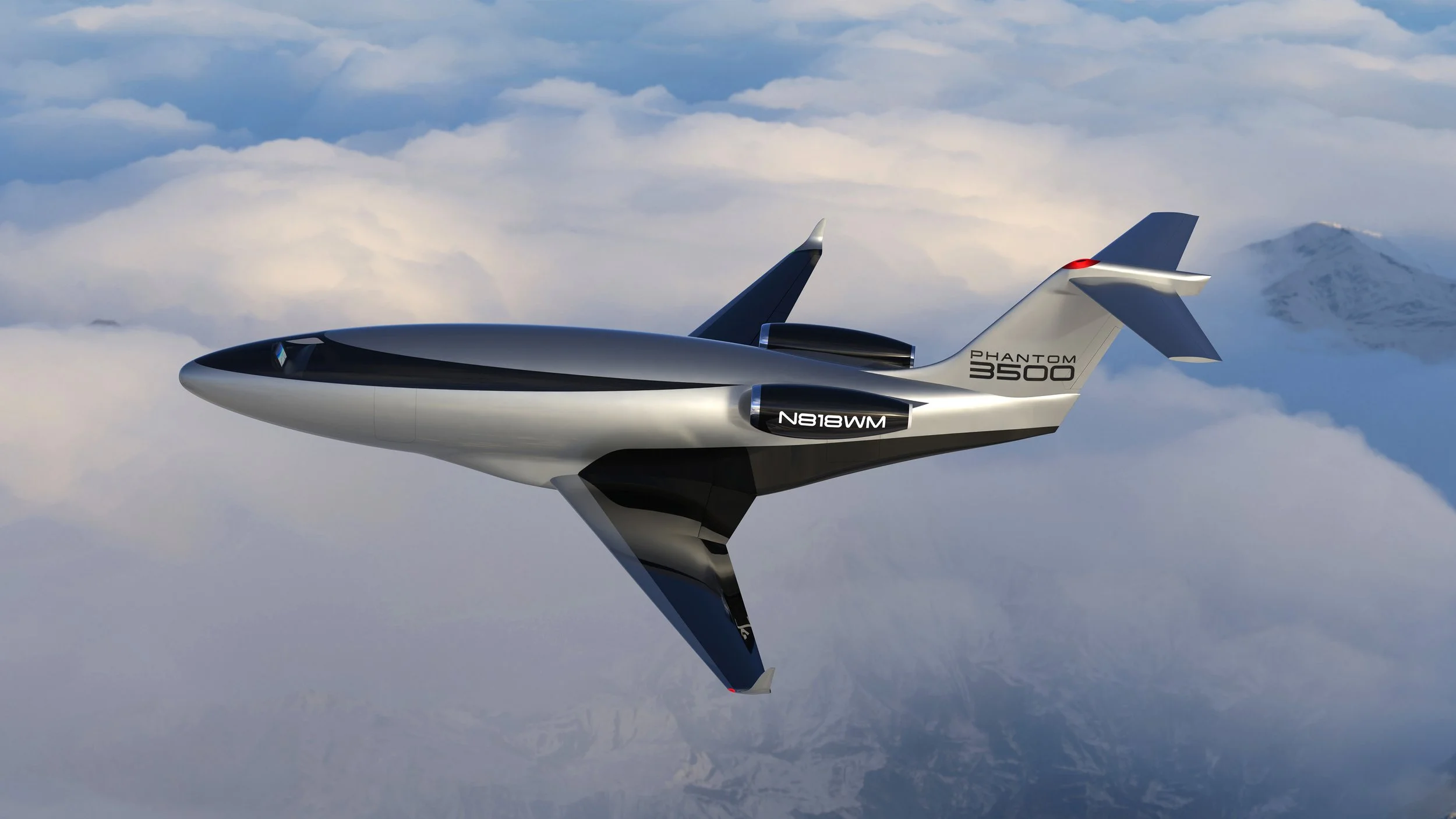The Allplane Podcast #128 with Otto Aviation COO Scott Drennan
In this episode of the podcast we’ll explore one of the most truly disruptive clean-sheet aircraft projects currently underway.
Scott Drennan is President and Chief Operations Officer (COO) of Otto Aviation, a US startup aircraft maker that is developing an ultra-efficient executive jet. The Phantom 3500 uses a teardrop-shaped design to take full advantage of the laminar flow principle and reduce drag to a minimum.
Otto Aviation is, in fact, not a newcomer. The firm has been working on this concept for more than a decade, although in the last few years it has pivoted from the original idea, the Celera 500L propeller aircraft for the general aviation market, to the Phantom 3500, a fully-fledged business jet which aims to compete in the super-mid-size category of business jets.
With Scott we talk about Otto Aviation’s disruptive approach to aircraft design, how laminar flow can be mastered to achieve some unprecedented fuel efficiency gains and what this involves in terms of financial and environmental performance. We also touch upon one of the most eye-catching features of the Phantom 3500: the absence of windows for extra aerodynamical gains and how Otto Aviation is responding with a new way to conceive the passenger experience.
And, following the announcement, made during the 2025 Paris Air Show, that Otto Aviation is investing in a greenfield manufacturing facility in Jacksonville, Florida, we also discuss the company’s investment plans and go-to-market strategy. How many aircraft is it planning to build per year? Who is it planning to primarily compete with and how?
Tune in for a fascinating conversation that combines technical and commercial insights about the unique Phantom 3500 business jet, a flying bullet which may change how we think about aerodynamics and aircraft construction!
Get this episode on:
Things we talk about in this episode
Scott’s professional background and how he got involved with the Otto Aviation project
The story of Otto Aviation, how it all started and what is it trying to achieve
From the Celera 500L to the Phantom 3500, how Otto Aviation pivoted its core product
From torpedoes to aircraft: what is laminar flow technology and why it can deliver huge efficiency improvements
What market segment is the Phantom 3500 going to compete in
Why the Phantom 3500 has no windows and how is Otto Aviation making up for it
Why Otto expects the Phantom 3500 to have a much lower environmental footprint that other comparable aircraft
Otto Aviation’s industrial plans: where and how is it planning to manufacture the Phantom 3500
Otto Aviation’s Guaranteed Uptime plan for customer support
Resources
Otto Aviation on Linkedin
The piece I wrote for The Points Guy about the Celera 500L
Some physics principles that come up during the conversation:
Bell Helicopter & Supernal, two companies Scott worked at
New Vista Capital, the venture capital firm that is backing Otto Aviation
About REGENT, another interesting disruptive company that Scott is linked to:
And the REGENT Seaglider sea trials we mentioned
Competitors of the Phantom 500: the Embraer Praetor 500 and the Cessna Citation X
The announcement of the $500M support package from the state of Florida
FAA’s Part 23 vs Part 25 regulations
FAA’s Part 38 related to Fuel Efficiency Certification
The F-35, an example of fuselage smoothness
The solution to the windowless cabin?
Wizz Air’s claim to being the least carbon intensive airline
A rendering of the Phantom 3500:
Podcast Music: Five Armies by Kevin MacLeod
Link: https://incompetech.filmmusic.io/song/3762-five-armies
License: http://creativecommons.org/licenses/by/4.0/
Interview Transcript:
(please note that, although we strive to make it as close as possible to the original recording, the transcript may not be 100% accurate)

